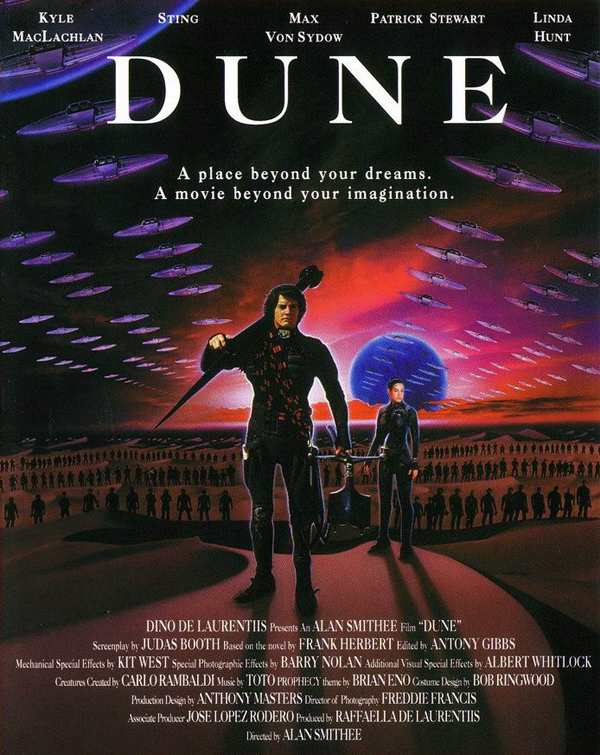Column: Dune (1984) review
Nov 15, 2021
David Lynch, director of several critically acclaimed works like “Mulholland Drive” and “Twins Peaks” was the first to adapt the novel “Dune” to the big screen. It was a difficult task, but Lynch was able to pull it off and make another cult classic.
The biggest obstacle with watching this film is obviously the special effects. The movie was made in 1984 and some of the background effects of Paul Atreides (Kyle MacLachlan) grappling a giant worm and Gurney Halleck (Patrick Stewart) fighting with a force field around him are absolutely laughable. Once the audience accepts the fact that this film won’t be as visually pleasing as the latest “Dune” release, the movie is an absolute joy to watch.
Lynch doesn’t take the source material too seriously. It’s an undoubtedly confusing film–I still don’t understand why there was a gang of Bruce Willis look-alikes or why the main villain was humanoid yet floated around in a suit like the ghost in “Ghostbusters” had been struggling with heroin addiction for 25 years. Even though the lore and some of the plotlines leave viewers asking “what the hell is going on,” it’s not necessary to fully understand every detail to enjoy the film.
At its core, the narrative is a basic fantasy tale with a science fiction coat. Paul, a young man who doesn’t know his true power and the prophecy he was destined to fulfill, is eager to visit the planet where spice (some kind of important drug) is harvested. Paul’s father is soon murdered by a traitor in their midst and their rivals soon take over the planet. Stranded with his mother, Paul soon trains a group of oppressed planet natives and soon takes back control of the world and the spice. Paul fulfills the prophecy and becomes the most powerful man in the galaxy.
Lynch takes this extremely Shakespearian story and flips it on its head. It’s a film that any Lynch fan would surely enjoy.
The costume designs and built set pieces would please any old-school sci-fi or Star Wars fan. It’s a treat to watch a movie that reflects the state of filmmaking at the time. The set designs and charters are whacky and quirky. These details are enjoyable for the entire duration of the movie.
Some of the fighting scenes have the same effect. Sure, some of them are very cheesy with retro computer-generated images becoming eye-sores. Close combat scenes that aren’t touched by post-production are tense and excellently shot, however.
The music is fantastic throughout the movie. A classic science fiction epic might rely completely on an equally epic score. The main theme of this movie is exactly that. But Lynch twists this common convention. The final battle of the movie, which is won by Paul and the Fremen, is a combination of the main theme of the film with legendary guitar riffs by the band Toto.
There are some extremely weird scenes in the movie, like shots of a half-naked Sting (yes, the actual singer Sting, of The Police, is in this movie). But these bizarre shots are matched by equally lovely ones like Patrick Steward holding a tiny pug and shooting his laser pistol at an approaching army.
This movie is such a classic and enjoyable watch because of the way Lynch makes it his own. The narrative is serious, but the characters, their dialogue and designs make the film entertaining. The audience doesn’t have to understand every specific detail that is brought to their attention. Instead, Lynch expertly takes complicated adaptations of a classic novel into a movie that anyone can appreciate watching regardless of how complex the plot gets.























